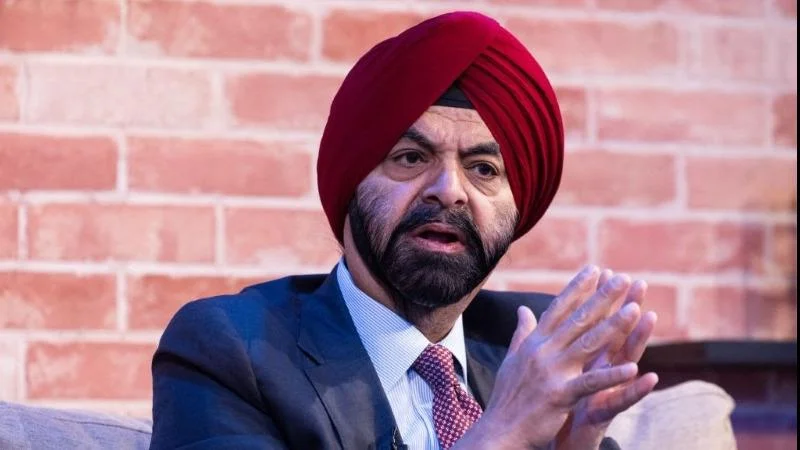World Bank Group President Ajay Banga addressed the 2025 Annual Meetings Plenary, outlining the institution’s current priorities and recent reforms. In his remarks, Banga emphasized the importance of reconstruction in conflict-affected regions such as Gaza and Ukraine, noting that expert groups have been convened to plan for rebuilding efforts with input from both public and private sector specialists.
Banga stated, “Reconstruction is an essential part of our mandate. A service we stand ready to deliver whenever and wherever it’s needed and to the best of our ability.” He also highlighted the World Bank’s commitment to conflict prevention alongside its focus on post-conflict rebuilding.
Addressing demographic trends, Banga pointed out that by 2050 more than 85% of the world’s population will reside in countries currently classified as developing. He warned of a significant gap between workforce entrants and available jobs: “In just the next 10 to 15 years, 1.2 billion young people will enter the workforce—vying for roughly 400 million jobs. That leaves a very large gap.”
The speech focused on Africa’s rapid population growth, with projections indicating Zambia will add 700,000 people annually, Mozambique’s population will double, and Nigeria will grow by about 130 million by mid-century.
Banga stressed that job creation should be central to development strategies: “A job is more than a paycheck. It is what allows both women and men to pursue their aspirations. It’s purpose. It’s dignity.” He added that jobs are crucial for stability within societies.
The president detailed internal reforms at the World Bank Group aimed at increasing efficiency and effectiveness. Project approval times have been reduced from an average of 19 months to 12 months; some projects now receive approval in less than 30 days. The organization has consolidated leadership in country offices and introduced a corporate scorecard with fewer outcome indicators.
Banga explained that nearly 90 percent of jobs ultimately come from the private sector but noted they often begin with public sector involvement. He described a three-pillar strategy: governments build infrastructure; business environments are improved through clear rules; and private sector investment is supported via capital provision and risk insurance.
He identified five sectors with high potential for job creation: infrastructure and energy, agribusiness, healthcare, tourism, and value-added manufacturing including minerals processing. Strategic initiatives launched over the past two years span these areas.
Highlighting specific programs, Banga mentioned Mission 300—a goal to connect 300 million Africans to electricity by 2030—and AgriConnect, which aims to help smallholder farmers move from subsistence farming toward surplus production using financing tools and digital technologies like AI.
The World Bank Group has also begun working with partners such as the International Atomic Energy Agency (IAEA) on nuclear power support for countries seeking diverse energy solutions.
Healthcare delivery remains a priority; Banga referenced an upcoming summit in Tokyo aimed at advancing healthcare access for up to 1.5 billion people globally. Indonesia was cited as an example for its initiative providing annual primary care visits for every citizen.
Efforts are underway within the organization to facilitate greater private capital mobilization through new financial instruments—including guarantees managed centrally by MIGA—and mechanisms like asset securitization intended to attract institutional investors into emerging markets.
On climate resilience and sustainability, Banga reported that last year nearly half of World Bank financing qualified as having climate co-benefits under shared multilateral development bank methodology—with resilience comprising a growing share of investments in public sector portfolios.
To support institutional strength in client countries, initiatives include updated Public Finance Reviews aimed at helping governments prioritize spending effectively; deployment of debt-for-development tools; expansion of transparency measures such as debtor reporting systems among G20 nations; anti-corruption efforts using data-driven tools; and capacity-building through training programs for public officials.
Financial results over two years show annual financing rising from $107 billion to $119 billion while private capital mobilization increased from $47 billion to $67 billion during this period. Total commitments reached $186 billion including private capital mobilization (PCM), with an additional $79 billion raised through bond issuances from private investors.
Since launching its new scorecard in 2024, Banga said the World Bank Group has helped:
“20 million farmers access technology, inputs, and markets.
60 million people connect to electricity
70 million people get an education or develop a skill
And 300 million experience quality health and nutrition services”
He concluded by linking all development outcomes back to employment: “A job is what happens when a school leads to a skill, when a road leads to a market, when a clinic keeps someone healthy enough to work, when energy powers a business.”

